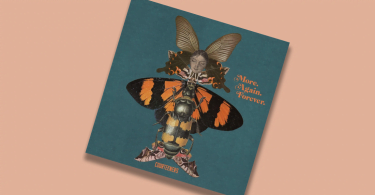Incredible talents that inspired generations, troubled lives and drug-fuelled frenzy are not the only thing that musicians like Jim Morrison, Kurt Cobain, Jimi Hendrix, Janis Joplin and Amy Winehou
Incredible talents that inspired generations, troubled lives and drug-fuelled frenzy are not the only thing that musicians like Jim Morrison, Kurt Cobain, Jimi Hendrix, Janis Joplin and Amy Winehouse had in common. The phenomenon of their premature deaths occurring at the age of 27 is a cause of controversy and speculation to this day. The 27 Club is the name given to an exclusive and elite collection of influential musicians, all of whom died at that age.
The sensation of The 27 Club started with the fatal death of “The Big Five”: Robert Johnson, Brian Jones, Jimi Hendrix, Janis Joplin and Jim Morrison, giving the origin to the “live fast, die young” motto. The bluesman Robert Johnson, considered as one of the most important blues singers in the history, died on August 16, 1938. His non self-inflicted death was caused by poisoning, started the series of suicides, overdoses and unfortunate accidents.
Undisputedly, some of the most prominent members of the group, all died within 10 months. Brian Jones, the guitarist of the Rolling Stones allegedly drowned in a swimming pool on July 3, 1969. Jimi Hendrix – the legendary guitarist, acclaimed as the greatest artist in musical history, died in London on September 18, 1970. The death by asphyxiation, caused by an accidental overdose on sleeping pills, did not affect the Hendrix legacy as he is still regarded the most influential electric guitarist of all time. Two weeks later on October 4, Janis Joplin, “The Queen of Rock and Roll,” overdosed on heroin.
In 1971, on the same day as Jones, Jim Morrison, the controversial leader of The Doors died of “heart failure” in the bathtub of a Parisian apartment. Despite his fatal death, he continues to inspire young musicians and famous artists with the stereotype of a surly, sexy and scandalous rock-star and the trademark leather pants which became a sample of rock apparel.
A few decades down the road, in a different era for music – some say that grunge died along with Kurt Cobain. Foreseeing his premature death in his teen years, Cobain – the lead singer and guitarist for Nirvana, joined The 27 Club on April 5, 1994. Never comfortable with his fame and exhausted with the excesses of rock’n’roll lifestyle, Cobain’s drug abuse and the following heroin addiction are well documented. After an unsuccessful suicide attempt earlier in the year, according to the official report Cobain has died as a result of self-inflicted shotgun after writing a suicide note to childhood imaginary friend “Boddah” and injecting deadly amount of heroin. Kurt Cobain has been a great influence in the alternative music scene and the “messiah and martyr” of grunge. Seen by many as the “last real rock star,” remains the icon for teenage angst for generations.
Finally, the latest recruit of the group is the troubled British singer Amy Winehouse. Found dead in her London home on July 23, 2011, five-time Grammy Award artist died due to alcohol poisoning. Known for her ongoing drug and alcohol abuse, self-harm, depression and eating disorder, Winehouse was constantly attacked by tabloids and disregarded by many critics and producers. The media scandals involving her battle with drugs seems to be redeemed with her entry to The 27 Club. Consequently, Winehouse is remembered for her deep, distinctive vocals and unique style rather than the eccentric behaviour and troubles with the police.
As many as 40 musicians can be considered members of The 27 Club. The members of bands such as Manic Street Preachers, The Gits, Hole, The Drifters, The Stooges, The Mars Volta and Canned Heart all met their end at 27. The rock’n’roll lifestyle with all its extremes certainly contributes to the tragic deaths, including overdoses, suicides as well as bizarre accidents. As biographer, Charles R. Cross says, “The number of musicians who passed away at 27 is truly remarkable by any standard. Though humans die regularly at all ages, there is a statistical spike for those who die at 27.”
With the associations of number 27, strongly reinforced in music industry throughout the years, the demise of the some of the most talented rock-stars in the history, although tragic, solidified their position in the music culture. Perhaps the lure of joining the famous 27 Club is the guarantee of the ultimate rock’n’roll immortality? After all, it’s better to burn out than fade away.








